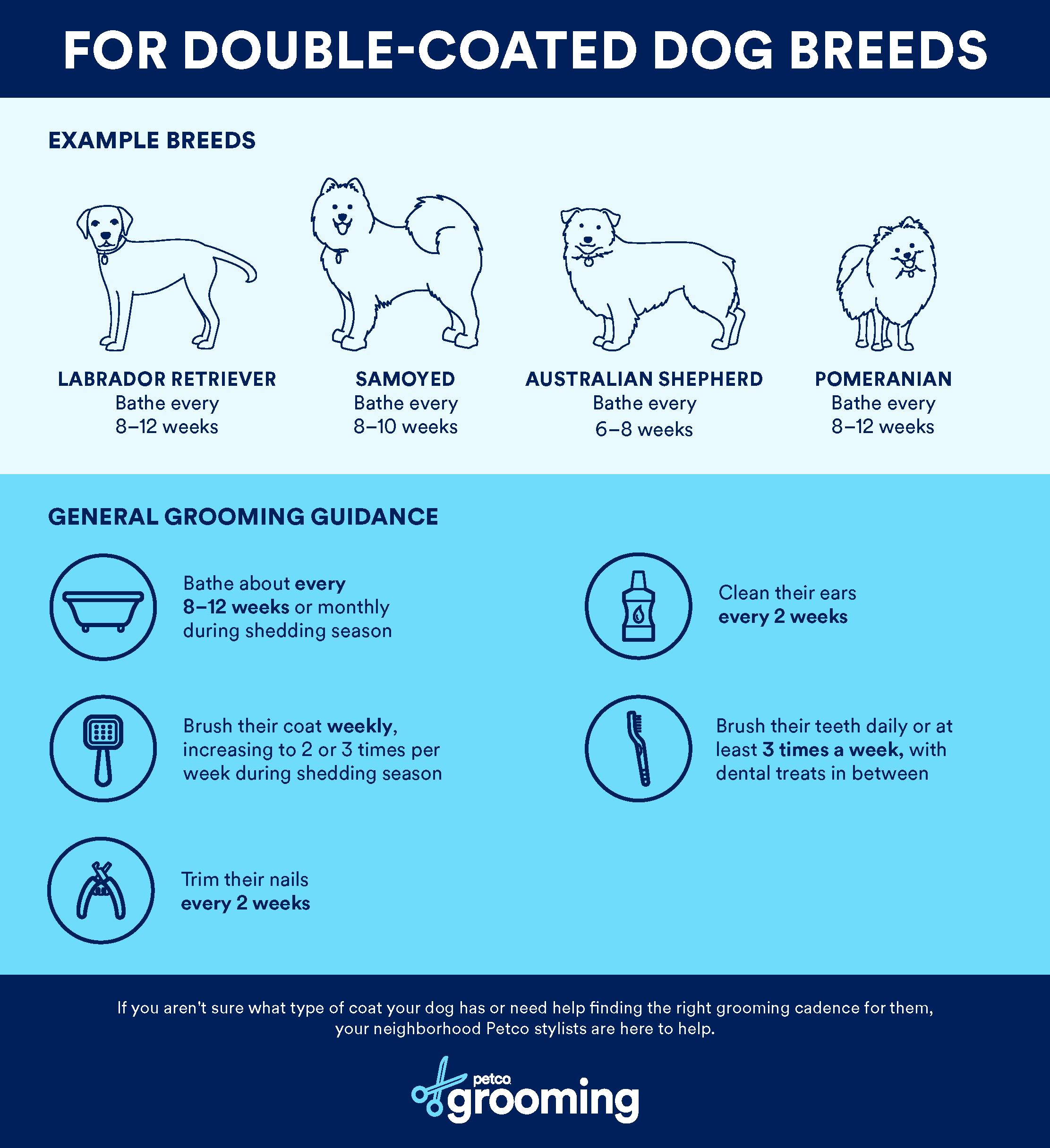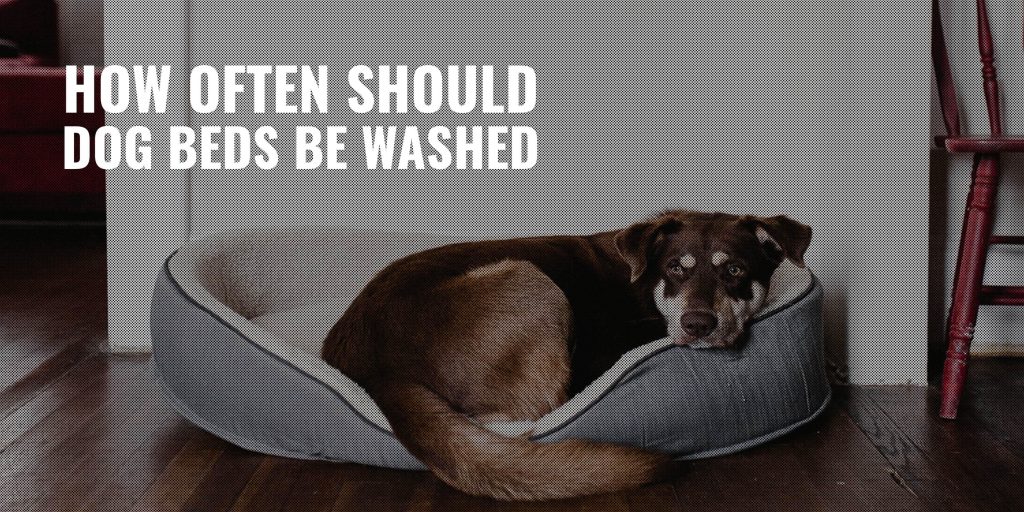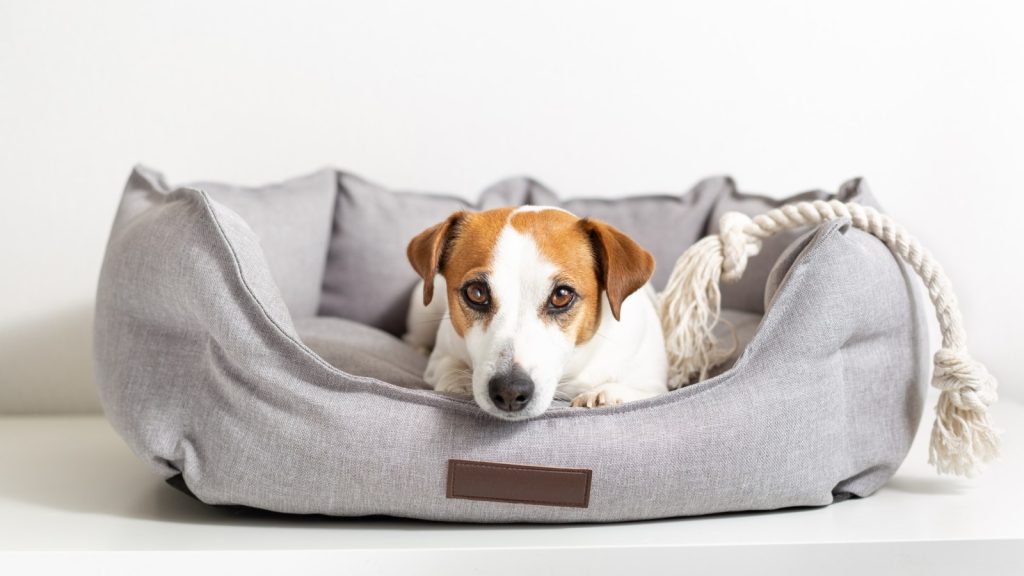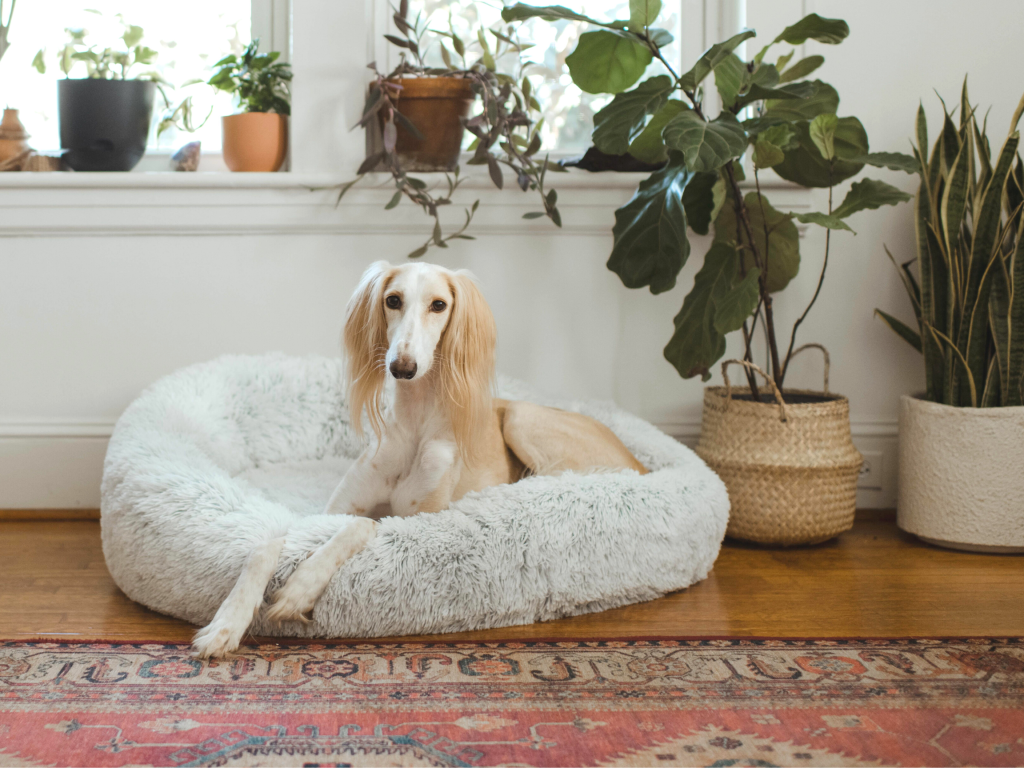Taking care of your furry friend includes ensuring their living space is clean and comfortable. But have you ever wondered just how often you should be washing your dog’s bed? Well, fret no more! In this informative article, we’ll guide you through the ideal frequency of washing your dog’s bed, providing you with practical tips to keep your four-legged companion’s sleeping area fresh and hygienic. Say goodbye to any lingering doubts and hello to a happy, clean dog bed!
Factors Influencing Washing Frequency
Size of your dog
The size of your dog can greatly influence how often you need to wash their bed. Larger dogs tend to bring in more dirt and debris from outside, and their bed may accumulate more odors and stains as a result. Smaller dogs, on the other hand, may not track in as much dirt, but may still need their bed washed regularly due to shedding.
Type of dog bed
Different types of dog beds may require different washing frequencies. Memory foam beds, for example, may need less frequent washing compared to pillow or cushion beds, as the memory foam material is resistant to trapping dirt and odors. Orthopedic beds, which are designed to support dogs with joint issues, may also benefit from regular washing to maintain their effectiveness.
Indoor or outdoor use
If your dog spends a significant amount of time outdoors or has access to a muddy yard, their bed may get dirtier faster and require more frequent washing. Indoor dogs who rarely venture outside may have a less dirty bed, but regular washing is still important for maintaining hygiene and preventing odors.
Allergies or sensitivities
If your dog has allergies or sensitivities to certain allergens or chemicals, it may be necessary to wash their bed more often to remove potential irritants. This can help alleviate any skin irritations or respiratory issues they may be experiencing.
Incontinence issues
For dogs with incontinence issues, washing their bed frequently is essential to prevent the buildup of urine or fecal odors and bacteria. Incontinence pads or waterproof bed covers can also be used to protect the bed and make cleaning easier.
General Guidelines for Washing
Manufacturer’s recommendations
Always refer to the manufacturer’s instructions for washing your dog’s bed. Each bed may have specific care instructions, such as temperature settings and types of detergents to use or avoid. Following these guidelines will help ensure that you wash the bed properly and don’t damage the materials.
Frequency for normal use
As a general rule of thumb, it is recommended to wash your dog’s bed once every two to four weeks for normal use. This frequency may vary depending on the factors mentioned earlier, such as the size of your dog and the type of bed they have. Observing the bed for visible dirt, stains, or odors can also help determine when it needs cleaning.
Frequency for heavy use
If your dog spends a lot of time outdoors, rolls in dirt or mud frequently, or has accidents on their bed, you may need to wash it more frequently. In such cases, washing the bed once a week or every other week may be necessary to ensure cleanliness and prevent the buildup of odors or bacteria.
Frequency for special circumstances
Certain circumstances may require more frequent washing. If your dog has a skin condition or is recovering from surgery, washing their bed regularly can help prevent infection and provide a clean and comfortable resting place. Additionally, if there is an infestation of pests or parasites, washing the bed and treating it with appropriate products will help eliminate them.
Indicators for Washing
Visible dirt or stains
If you notice visible dirt or stains on your dog’s bed, it’s a clear indication that it needs to be washed. Regular inspection of the bed’s surface can help spot these signs and prompt you to initiate the washing process.
Foul odors
Unpleasant odors emanating from the bed are a strong indication that it needs washing. Your dog’s bed should not have a lingering smell, as it can indicate the presence of bacteria or other pollutants. If you notice any foul odors, it’s time to give the bed a thorough cleaning.
Increased allergies or irritations
If your dog starts experiencing an increase in allergies or skin irritations, their bed could be a contributing factor. Dust mites, pollen, or other allergens can accumulate on the bed’s surface, causing discomfort and aggravating existing allergies. Washing the bed can help remove these allergens and provide relief for your furry friend.
Signs of pests or parasites
If you spot any signs of pests or parasites such as fleas, ticks, or mites on your dog’s bed, immediate action is necessary. Washing the bed with appropriate cleaning agents and treating it with anti-parasitic products will help eliminate these unwanted guests and prevent infestations.
Cleaning Methods
Bed cover removal
Most dog beds have removable covers, which makes the washing process much easier. Start by removing the cover from the bed. Check for any zippers or fasteners that may need to be undone before removal.
Pre-treatment for stains
Before washing the bed cover, it’s essential to pre-treat any visible stains. Use a stain remover suitable for the fabric of the cover and follow the instructions on the product packaging. This step will help ensure that the stains are effectively removed during the washing process.
Handwashing the cover
If the care instructions allow, handwashing the cover can be a gentle method to clean it. Fill a basin or sink with lukewarm water and a mild detergent specifically formulated for delicate fabrics. Gently agitate the cover in the soapy water, paying attention to stained areas. Rinse thoroughly to remove any soap residue.
Machine washing the cover
For covers that are machine washable, follow the manufacturer’s instructions for the appropriate washing cycle and temperature. Use a gentle or delicate cycle with a mild detergent. Avoid using bleach or harsh chemicals that may damage the fabric. Once the wash cycle is complete, remove the cover promptly and proceed to the drying process.
Drying the cover
Dry the cover according to the instructions provided. Air drying is recommended for most covers to prevent shrinking or damage caused by high heat. If machine drying is permitted, use a low or delicate heat setting. Ensure that the cover is completely dry before reassembling it with the inner stuffing.
Cleaning the inner stuffing
In addition to washing the cover, it’s important to clean the inner stuffing of your dog’s bed. If the stuffing is machine washable, follow the same instructions as the cover. Otherwise, spot cleaning or using a fabric freshener spray can help maintain the freshness of the stuffing. Remember to allow the stuffing to fully dry before placing it back into the cleaned cover.
Frequency for Different Dog Bed Types
The washing frequency for different dog bed types can vary due to their unique materials and construction. Here are some general guidelines:
Memory foam beds
Memory foam beds typically do not require frequent washing, as the foam material is less prone to trapping dirt and odors. Spot cleaning any visible stains and regularly vacuuming the bed’s surface can help maintain its cleanliness. However, if your dog has accidents or the bed develops an odor, washing the cover and treating the foam with appropriate cleaning products may be necessary.
Orthopedic beds
Orthopedic beds, designed to provide support for dogs with joint issues or arthritis, often have removable covers that can be washed. The frequency of washing will depend on the specific needs of your dog and the bed’s condition. Regular inspection and spot cleaning can help maintain hygiene, and washing the cover every few weeks or as needed will help keep the bed clean and fresh.
Pillow or cushion beds
Pillow or cushion beds tend to accumulate dirt, hair, and odors more easily than other bed types. It is recommended to wash the cover of these beds every one to two weeks, especially if your dog spends a lot of time on them. Frequent vacuuming and spot cleaning can also help prevent buildup between washes.
Elevated or cot beds
Elevated or cot beds are typically made of breathable materials such as mesh or canvas, which do not absorb odors and stains as readily. As a result, they generally require less frequent washing. Spot cleaning and regular vacuuming can help maintain cleanliness, and washing the cover every few weeks, or as needed, will ensure a fresh resting place for your dog.
Heated beds
Heated beds may require special attention when it comes to washing. In most cases, the heating elements should be removable, allowing you to wash the cover separately. Follow the manufacturer’s instructions for care and maintenance, as improper washing or drying can damage the heating elements. Regular inspection and spot cleaning can help maintain the cleanliness of the bed in between washes.
Waterproof beds
Waterproof beds are designed to repel liquid and prevent it from penetrating the inner stuffing. This feature makes them easier to clean and maintain. Regular spot cleaning and wiping down the surface with a damp cloth can help remove any dirt or stains. Depending on your dog’s needs and the bed’s condition, washing the cover every few weeks or as needed will help keep the bed fresh and hygienic.
Travel beds
Travel beds are often compact and portable, making them convenient for outings and trips. These beds may not need frequent washing, especially if your dog only uses them occasionally. However, if they become soiled or develop odors, washing the cover according to the manufacturer’s instructions will help maintain cleanliness and ensure a comfortable sleeping area for your dog.
Best Practices for Maintaining Cleanliness
Regular vacuuming
Regularly vacuuming your dog’s bed helps remove dirt, hair, and other debris that can accumulate over time. Use a handheld or upright vacuum cleaner with a brush attachment to effectively clean the bed’s surface and crevices. Vacuuming should be done in addition to, not as a substitute for, regular washing.
Using mattress protectors
Using a mattress protector or a waterproof bed cover can help prolong the lifespan of your dog’s bed and make cleaning easier. These protective covers act as a barrier between your dog and the bed, preventing stains, odors, and moisture from seeping into the inner material. Simply remove and wash the cover when needed, leaving the bed itself clean and fresh.
Spot cleaning
Regularly inspecting your dog’s bed and addressing any visible stains promptly can prevent them from becoming more challenging to remove. Spot cleaning involves using a cleaning solution appropriate for the fabric and gently dabbing or rubbing the stained area with a clean cloth or sponge. Be sure to follow the manufacturer’s instructions for any cleaning products used.
Regular grooming
Regular grooming of your dog, including brushing their coat, can help reduce the amount of hair and debris that ends up on their bed. Brushing your dog outside or in an easily cleanable area can minimize the transfer of dirt and allergens. This proactive approach can help keep the bed cleaner for longer periods between washes.
Isolating the bed from outdoor elements
If your dog’s bed is placed near an entryway or exposed to outdoor elements, considering relocating it to a more protected area can help minimize the dirt and debris it collects. Placing a mat or rug beneath the bed can provide an additional barrier and catch any dirt or mud your dog may bring in.
Benefits of Washing
Improved hygiene
Regularly washing your dog’s bed helps maintain good hygiene and ensures a clean sleeping area for your furry friend. It removes dirt, bacteria, and allergens that may accumulate on the bed’s surface, reducing the risk of infections and skin irritations.
Prevention of odor buildup
Washing your dog’s bed removes any lingering odors that may have developed over time. This is particularly important if your dog spends a lot of time outside, as outdoor smells can transfer onto their bed. A fresh and clean bed will help keep your home smelling pleasant.
Reduced allergens
By regularly washing your dog’s bed, you can significantly reduce the presence of allergens such as dust mites, pollen, and pet dander. This can greatly benefit dogs that suffer from allergies and respiratory issues. Less exposure to allergens can provide relief and improve their overall well-being.
Prolonged lifespan of the bed
Cleaning your dog’s bed regularly can help extend its lifespan. Dirt, stains, and odors that are left unattended can deteriorate the fabric and structure of the bed over time. By keeping it clean and well-maintained, you can ensure that your dog’s bed remains comfortable and functional for a longer period.
Common Mistakes to Avoid
Using wrong cleaning agents
Using harsh cleaning agents or detergents not intended for dog beds can damage the fabric and compromise the bed’s quality. Always follow the manufacturer’s instructions and use mild, pet-friendly cleaning solutions to ensure the longevity of your dog’s bed.
Skipping pre-treatment for stains
Neglecting to pre-treat stains before washing the bed cover can lead to ineffective stain removal. Pre-treating the stains with a suitable stain remover will help break down the stain and increase the chances of a successful clean.
Aggressive washing methods
Overly aggressive washing methods, such as scrubbing vigorously or using high temperatures, can cause damage to the bed’s materials. Follow the manufacturer’s instructions for recommended washing methods and temperatures to preserve the bed’s quality.
Neglecting drying process
Failing to dry the bed cover thoroughly can result in dampness and the growth of mold or mildew. Make sure the cover is completely dry before reintroducing it to the inner stuffing. Air drying or using low heat settings in the dryer are generally recommended.
Forgetting to clean the inner stuffing
While the focus is often on washing the bed cover, it’s essential not to neglect cleaning the inner stuffing. Spot cleaning or using fabric freshener sprays can help maintain freshness. However, if the stuffing is washable, giving it a thorough cleaning periodically can further enhance the cleanliness of the entire bed.
Ensuring Your Dog’s Comfort During Washing
Providing an alternative resting place
During the washing process, it’s important to provide your dog with an alternative resting place. This can be another bed, a favorite blanket, or even a designated spot on the couch. Ensuring that your dog has a comfortable place to relax while their bed is being washed will help minimize any potential stress or discomfort.
Keeping a consistent routine
Dogs thrive on routine, so having a regular washing schedule can help them feel more at ease. Establish a washing routine that aligns with your dog’s needs and lifestyle, keeping in mind the factors that influence washing frequency. Consistency will help your dog adjust to the process and make it easier for both of you.
Using familiar scents or items
To help your dog feel more secure during the washing process, consider using familiar scents or items. Adding a familiar blanket or toy to their alternative resting place can provide a sense of comfort and familiarity. Additionally, using pet-friendly detergent or fabric freshener sprays with scents your dog is accustomed to can help create a more soothing environment.
Positive reinforcement and rewards
Rewarding your dog with praise, treats, or their favorite activity after their bed has been washed can create a positive association with the process. This positive reinforcement can help reduce any anxiety or resistance your dog may have towards the washing routine, making it a smoother and more enjoyable experience for both of you.
Conclusion
Regularly washing your dog’s bed is essential for maintaining hygiene, preventing odor buildup, reducing allergens, and prolonging the lifespan of the bed. Factors such as the size of your dog, the type of bed, and indoor or outdoor use can influence the frequency of washing. Indicators such as visible dirt or stains, foul odors, increased allergies or irritations, and signs of pests or parasites should prompt you to wash the bed. Follow the appropriate cleaning methods for bed covers, pre-treat stains, handwash or machine wash as instructed, and ensure proper drying. Different bed types, including memory foam, orthopedic, pillow or cushion, elevated or cot, heated, waterproof, and travel beds, require specific washing frequencies and care. Best practices for maintaining cleanliness include regular vacuuming, using mattress protectors, spot cleaning, regular grooming, and isolating the bed from outdoor elements. Washing your dog’s bed brings benefits such as improved hygiene, prevention of odor buildup, reduced allergens, and a prolonged lifespan for the bed. Avoid common mistakes such as using wrong cleaning agents, skipping pre-treatment for stains, aggressive washing methods, neglecting drying process, and forgetting to clean the inner stuffing. Ensure your dog’s comfort during the washing process by providing an alternative resting place, keeping a consistent routine, using familiar scents or items, and offering positive reinforcement and rewards. By following these guidelines and taking proper care of your dog’s bed, you can provide them with a clean and comfortable place to rest, enhancing their overall well-being.










